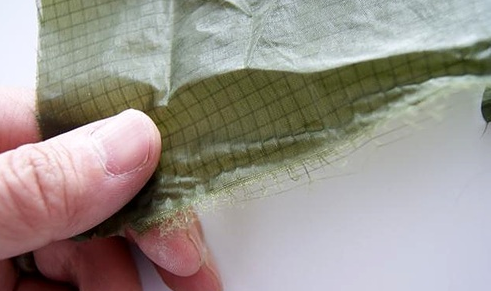What is the relationship between fabric tear strength

What has the tear strength of fabric related to? Whether it is clothing or fabrics used in daily life, tearing will always occur. It’s always embarrassing and annoying. Is the fabric tearing because the fabric is bad? Which fabric is more resistant to tearing and friction?
The main reasons affecting the different tensile and tearing strengths of fabrics:
1. It is related to the breaking strength and strength of warp and weft spinning yarns
This is related to the fiber raw material material of the yarn and the proportion of the blended chemical fiber fabric, the fineness of the fiber itself (count or special number) and the fineness of the spinning yarn (count or special number), the finished product Factors such as yarn uniformity, moisture regain or moisture content, single yarn or strands, the twist (twist coefficient) of single yarns and strands, and the storage life of fibers or yarns are all related. There are also factors such as elastic fiber including its elongation that will cause large differences.
2. The factors that affect the strength of the fabric are also the weaving method and weaving conditions of the fabric (such as knitted fabrics and woven fabrics), and the organizational structure (such as plain weave, twill, satin, jacquard, etc. etc.), warp and weft yarn density.
The warp strength is different from the weft strength, and the bursting strength is also different. Whether the edge of the fabric is included, whether it is a solid edge or a raw edge, whether defects and wrinkles are avoided, and the distance from the edge of the original fabric There may be differences (so the sampling must be at least 150 mm from the edge of the cloth).
Other sizing natural cotton fabrics and desized fabrics, fabrics that have been dyed and finished, especially those that have been impregnated and finished, will have very different strengths. Weaving technology, coloring, sanding, etc. all have an impact. Thick spun yarn shows better strength than thin spun yarn, twill weave is better than plain weave, unsanded is better than sanded, and the less corrosive the coloring, the better.
3. The different strengths of yarn-dyed fabrics are related to the strength of the original spinning yarn, the density in the warp and weft directions, the fineness of the spinning yarn, and the finishing process. It is necessary to improve the yarn-dyed fabrics. The strength of the fabric must be improved from these items.
After the no-iron fabric is finished, the stretch and tear strength will also decrease, which directly affects the durability of the fabric. The tensile and tear strength of the fabric before and after no-iron finishing, the strength and elongation of the spinning yarn, the interlacing resistance, and the morphological structure all have a significant impact on the strength.
The fabric made of spun yarns with high strength and elongation has a large stress triangle area when it is torn. The number of spun yarns that jointly bear the force is large, and the tearing strength is high. The tissue structure and warp and weft yarn density affect the interlacing points and slippage between the spinning yarns. If there are few intersecting points and simple slippage between the spinning yarns, the tearing strength of the fabric will be high.
4. After a period of actual wearing of work clothes, due to friction, the yarns in the fabric become thinner, and some parts often suffer sudden tearing.
For example, some parts of the buttocks of pants when squatting and parts of work clothes that are caught by sharp objects. The external force exerted on these parts causes the yarns inside the fabric to be subjected to extreme loads one by one and break. During the use of fabrics, if they are subjected to local concentrated loads for a long time, the strength may reach the limit and decrease, thus affecting the tensile and tearing strength of the fabric.
AAASVSGHRUTO
Disclaimer:
Disclaimer: Some of the texts, pictures, audios, and videos of some articles published on this site are from the Internet and do not represent the views of this site. The copyrights belong to the original authors. If you find that the information reproduced on this website infringes upon your rights, please contact us and we will change or delete it as soon as possible.
AA







